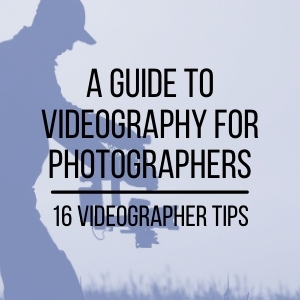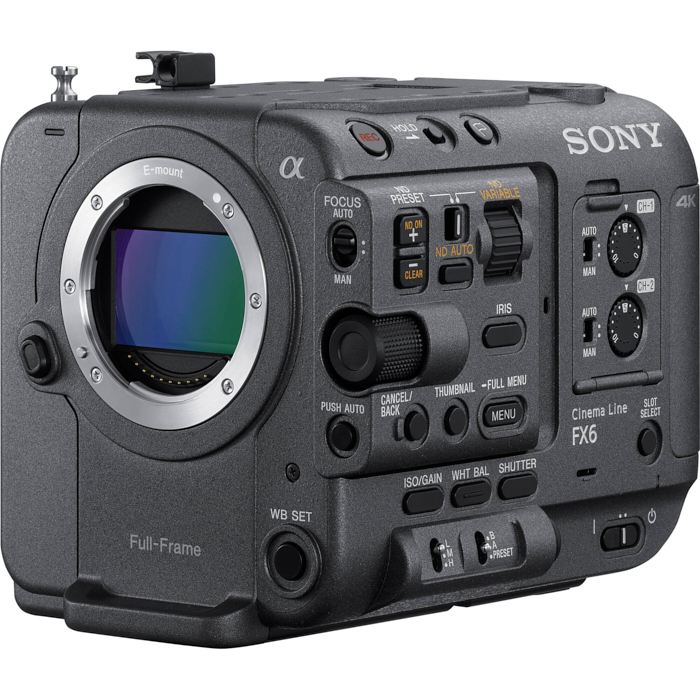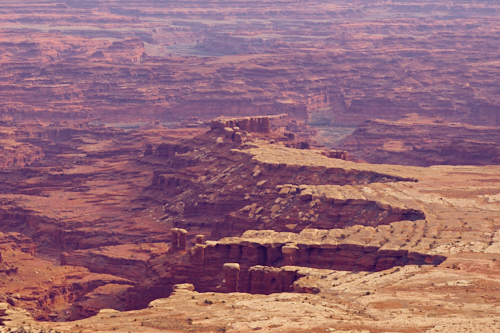There’s not much that beats being outdoors with the intention of capturing the natural world. The beauty the earth has to offer certainly is astounding and worth taking the time to capture and appreciate, though often we photograph landscapes just one way.
When we think about landscape photography and the tools used to create examples of it, I imagine most of us would likely default to wide angle lenses. And it makes sense. We want to capture as much of the scene as we can so we can encapsulate the experience of being there with as much clarity as possible, (if that’s your end game). Sometimes that wide angle is indeed the perfect choice, but for many photographers that’s the only choice. There is another option, and it can significantly change the composition and tone of the same scene.
Wide angle lenses elongate space, that is, they offer the illusion of elongated space. Compared to normal lenses, like a 50mm with a field of view of ~40º, a wide angle lens like, say, a 14mm lens with a field of view of ~90º will make the subject feel further away by exaggerating the perceived distance between the camera and the subject. Wide angle lenses force you to move physically closer to your subject in order to achieve your desired composition, and in doing so, elongates space and can present distortion.

This can be of great benefit for landscape photographers since foreground interest is typically highly desirable in wide angle landscape images. Having a foreground element like a flower, interesting rock, or bubbles in ice along with a separate scene in the background allows the eye to explore around the image and gives the viewer a sense of space. These images also tend to be highly dynamic since the foreground element is usually very close to the camera while the background elements are much further away. This difference in space is exaggerated by the wide angle lens, making the foreground object take up significant space in the frame, and can make for striking, highly energetic compositions.
The opposite approach to landscape photography offers a very different but equally valid type of image. Using telephoto lenses to not just bring distant subjects closer, but also compress space offers a different visual effect. Because telephoto lenses have a much narrower field of view, like ~11º for a 200mm lens on a full frame camera, you’re forced to move much further away from the subject in order to achieve your preferred composition. This increased distance has the visual effect of compressing space. This makes the distance between objects feel much smaller, as opposed to wide angle lenses which makes the space between objects larger. Telephoto lenses also give photographers the ability to more easily isolate the subject and remove distracting elements which may be difficult or impossible with wide angle lenses.

To illustrate this difference further, imagine you’re at the base of a tall mountain that you want to photograph. Since you’re so close to the subject, your only option is a wide angle lens, and while you may be able to get the “whole mountain” in the frame, you’ll likely miss the peak and several features closer to the top. The mountain will also be very wide at the bottom with a significant vanishing point at the top receding away from you.
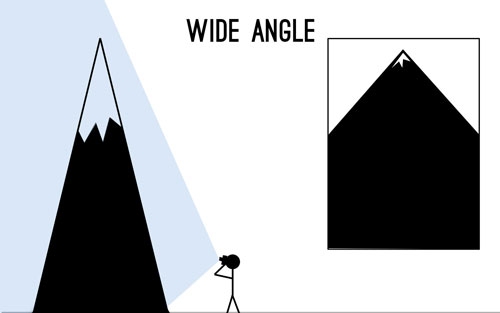
This may or may not be desirable depending on your intended final image, but if your goal is to photograph the entire mountain and capture its details, then you’ll need to move further away from it so that you can capture the peak as well as all of the finer details towards the top. As you move further away from the mountain, the peak comes into view. If you use the same wide angle lens to photograph the mountain, you’ll get the entire mountain in frame, but also a significant amount of sky. Though you’ve compressed visual space by moving away from it, the mountain will be smaller in your frame overall and may not appear as powerful. In this scenario, switching to a telephoto lens would take better advantage of the compressed space while also allowing the mountain to fill the frame.
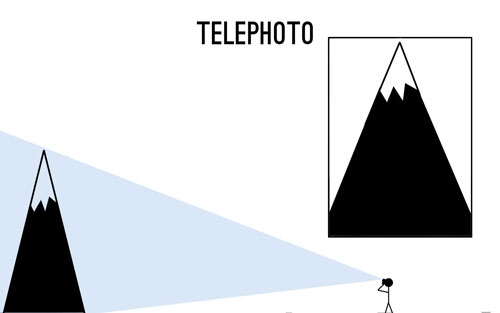
Though counterintuitive, remembering these characteristics of wide and telephoto lenses is valuable. Knowing how different focal lengths can effect space gives you another tool in your toolbox. Next time you're out in the field and a nice landscape catches your eye, leave the wide angle in the bag and try a longer option. You might be surprised by what you get.


